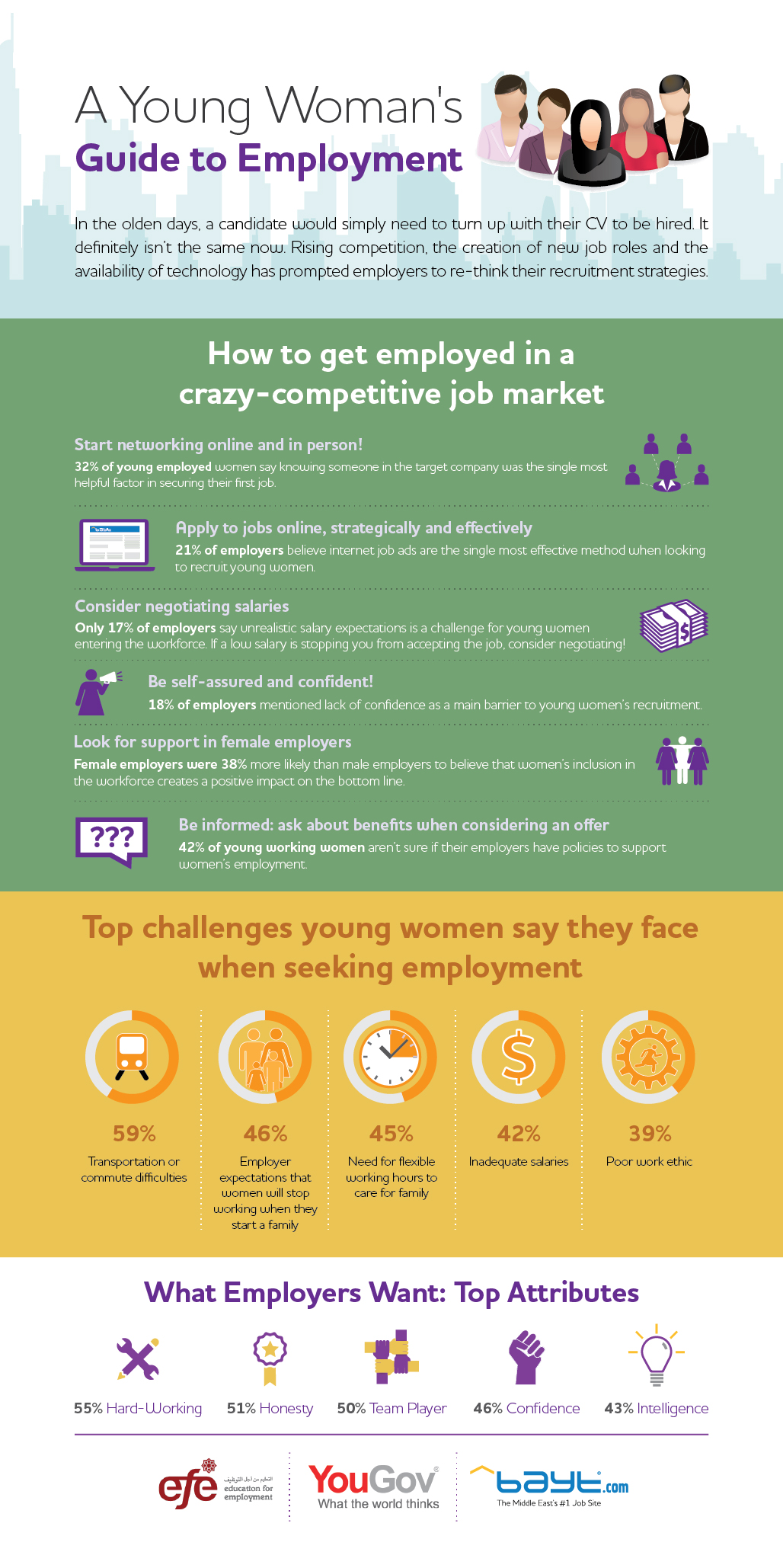Although the majority of working-age women in the Middle East and North Africa (MENA) region are educated, three out of four of them remain outside the labor force. This infographic by Bayt.com provides a guide for young women in the MENA to find a job in an ever-competitive job market.
Every young woman wants to have a successful career. But the path to success can be tricky, and navigating it requires that young women in the MENA be proactive in several aspects of their job-hunting strategy, as revealed in the “First Jobs for Young Women in the Middle East & North Africa: Expectations and Reality” white paper, a research initiative by Bayt.com, YouGov, and Education for Employment (EFE).
This infographic provides career guidance to prepare entry-level women in the MENA for the world of work. It explores several aspects of young women’s job-hunting strategy, including how they can get employed in a very competitive job market, but also top challenges young women in the MENA face when seeking employment, and what employers in the MENA are looking for.
Some key highlights:
- 21% of employers in the MENA believe that internet job postings are the most effective method when looking to recruit young women.
- 55% of employers in the MENA are looking for hard-working women.
- 18% of employers in the MENA mentioned lack of confidence as a main barrier to young women’s recruitment.
- 42% of women in the MENA say the biggest obstacle for women when evaluating a job is inadequate salary.

This article and all other intellectual property on Bayt.com is the property of Bayt.com. Reproduction of this article in any form is only permissible with written permission from Bayt.com.








